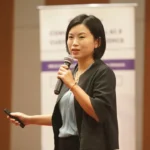Richard Goh 通过使用Anthropic Claude 2.0解决了具有挑战性的PSLE数学题,展示了他在商业转型中的创新技能。本文将深入探讨这位数字战略专家如何利用尖端技术应对复杂问题,并分享相关见解。 重点内容谁是理查德·吴?人工智能在教育中的角色探索:以Claude 2.0为例AI与教育理查德·吴:AI在数学教育中的潜力为Claude 2.0设置上下文测试2017年PSLE难题检查学生的计算过程和答案Claude 2.0承认其计算错误大型语言模型在逻辑任务中的局限性2015年PSLE逻辑推理题Claude解释答案并给出解决方案2021年PSLE硬币问题总结 谁是理查德·吴? Richard Goh 通过使用Anthropic Claude 2.0解决了具有挑战性的PSLE数学题,展示了他在商业转型中的创新技能。本文将深入探讨这位数字战略专家如何利用尖端技术应对复杂问题,并分享相关见解。是一位专注于商业转型、数字战略和创新管理的专业人士,拥有推动战略举措和管理复杂转型项目的丰富经验。此外,他还是AWS生成式AI大使,展现了其在人工智能领域的深厚知识和实践能力。 本文聚焦于理查德·吴利用Anthropic Claude 2.0解答PSLE数学难题的实践,分享他关于AI教育应用的独到见解。 人工智能在教育中的角色探索:以Claude 2.0为例 AI与教育 近期,我一直在探索人工智能在教育领域的应用示范。教育正成为AI,特别是生成式AI的全新前沿领域。然而,关于AI在教育中的作用,不同教育专家和教学方法仍存诸多争议。虽然我并非教育专家,但作为一位曾陪伴孩子备战小学离校考试(PSLE)的家长,我深知如果数学有一个AI辅导工具将会多么实用。 理查德·吴:AI在数学教育中的潜力 数学是一门逻辑学科,掌握它不仅需要理解逻辑思维,还需要通过持续练习来培养解决问题的能力。这与训练大型语言模型(LLM)的“思维链”(COT)方法类似。我很好奇Claude 2.0是否能够解决一些网络热议的PSLE最难数学题。关键在于为模型设定上下文,以便它按照预期场景回应。 为Claude 2.0设置上下文 我指示Claude 2.0通过苏格拉底式教学法与学生讨论数学问题。这种方法要求通过提问引导学生得出答案。同时,我限制模型只回答与数学相关的问题,而非直接给出答案。目标是让模型提供引导步骤,帮助学生学习解决问题的方法,而不仅仅是获取结果。我还要求模型分步骤解释解决过程,同时保持鼓励性和启发性。 测试2017年PSLE难题 2017年的一道PSLE数学题让家长们头疼不已,考生们也认为题目非常棘手。这道题要求计算名为Jess的人需要多少卷丝带。Claude 2.0在理解上下文后,分步骤提出问题,指导学生逐步解决问题。 检查学生的计算过程和答案 根据模型的引导,得出了答案是9卷。Claude 2.0也同意并给出了积极评价,但答案真的是正确的吗? Claude 2.0承认其计算错误 问题的关键在于数学逻辑正确,但考虑到每卷丝带剩余的80厘米不足以组成新的110厘米丝带,Claude后来承认错误并纠正答案为10卷。但模型在解释中也出现了瑕疵,例如误将剩余长度描述为100厘米,而实际上应为80厘米。 大型语言模型在逻辑任务中的局限性 数学是一项逻辑性任务,而LLM使用概率技术回答问题的方法,并非总能给出正确答案。例如,在本案例中,模型未能应用常识,即剩余的丝带长度不足以形成新的完整长度。这样的情况反映出,AI在涉及逻辑推理时可能仍有不足。 2015年PSLE逻辑推理题 2015年的一道PSLE数学题也曾引发争议,家长普遍认为这道题考察的是学生的常识和推理能力。题目涉及估算八枚新加坡$1硬币的总重量。Claude 2.0首先尝试通过“硬币实际重量”解决问题,但当被告知无法查找信息时,它尝试基于选项推导答案。 Claude解释答案并给出解决方案 Claude根据提示提供了完整的解答步骤,但稍显仓促,没有更多地引导学生自主思考得出答案。 2021年PSLE硬币问题 我快速回答了问题,Claude紧接着提供了完整的解答步骤和答案。不过,它跳得有些太快了,我原本希望它能通过更多的问题引导我逐步推导出答案。 2021年硬币与金钱价值的PSLE问题: 既然我们正在讨论硬币,2021年有一道PSLE题目与硬币相关,引发了家长和学生的广泛讨论。这道题分为两个部分。我将题目分解成两部分,并先测试了第一部分。Claude首先将题目信息以要点形式整理出来,然后提供了分步骤的解题指导。然而,Claude的解答似乎并不完全正确。 Claude尝试通过硬币质量解决问题: 当我表示自己不确定时,Claude给出了一个基于已知硬币质量的更详细解释。这与之前的题目解法非常相似。但我决定让它仅依据题目中的已知条件进行推导。 Claude利用已知的硬币重量信息: 在我提示不知道硬币质量后,Claude提供了硬币的重量信息并计算了解答。然而,这种方法并不是我们希望的最佳解题方式。它应该仅使用题目提供的信息来解答问题。 Claude提供答案并解释2021年PSLE难题的解法: 通过正确的提示方式,让Claude仅使用题目信息进行推导,它最终提供了完整的解答。答案表明Helen的钱更多,因为她多了40枚50分硬币。但值得注意的是,Claude在解释过程中再次出现了小错误:它将50分硬币比20分硬币多出的面值误说成了20分,而实际上是30分。虽然这个错误不影响最终答案,但也再次暴露了大型语言模型在数学计算上的薄弱之处。…









